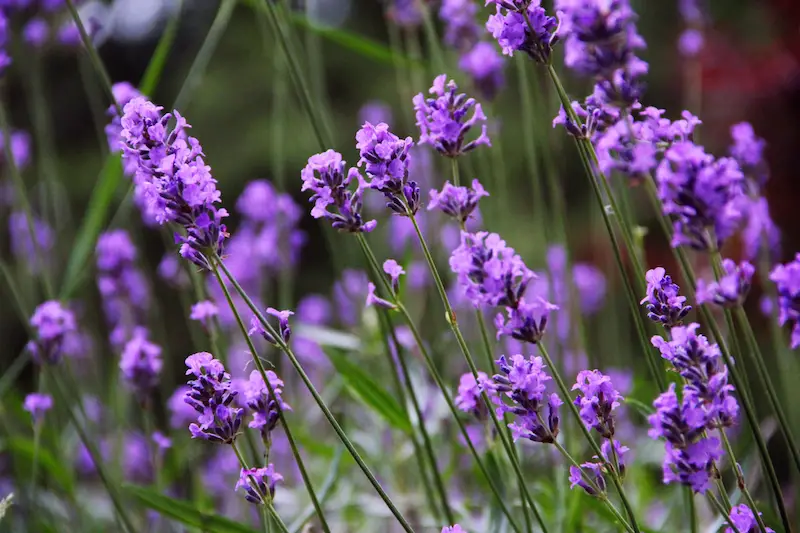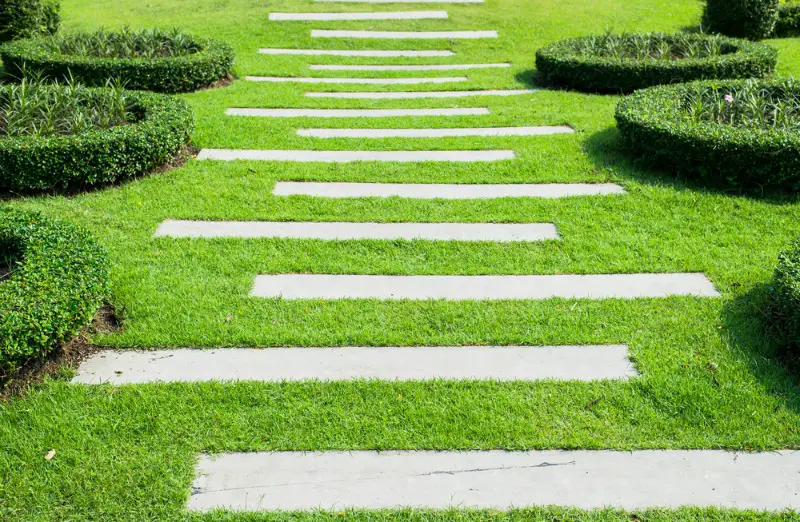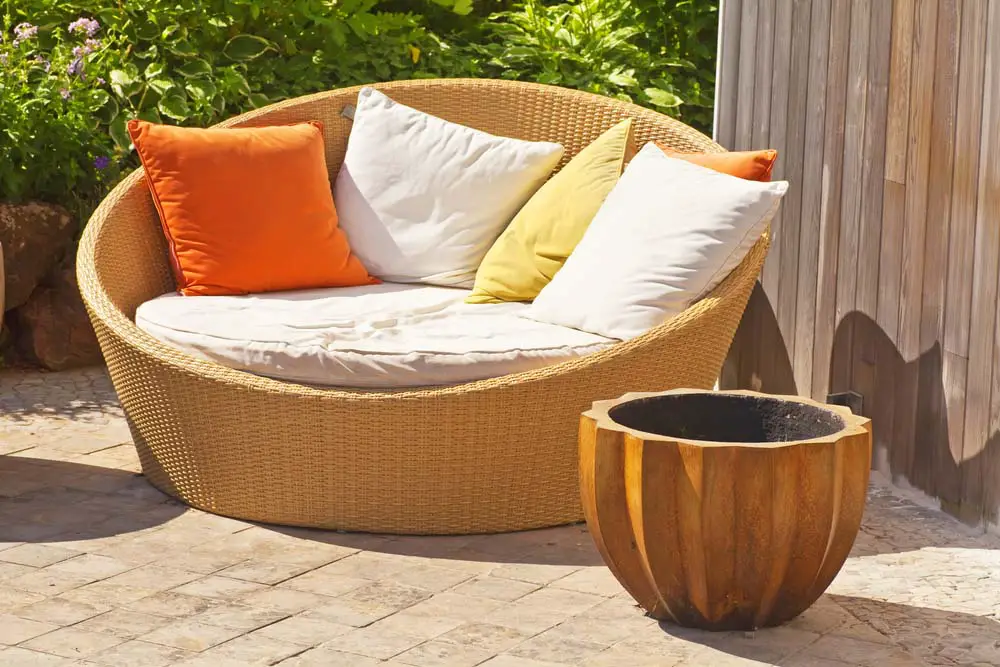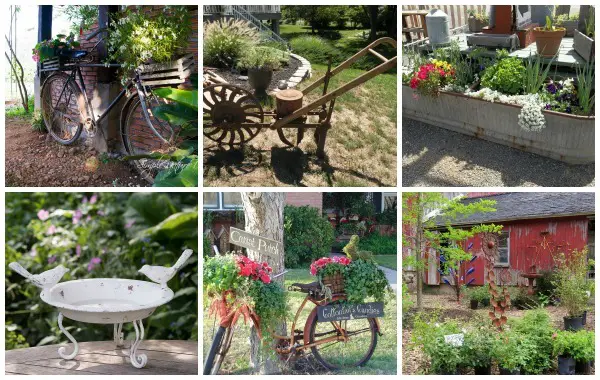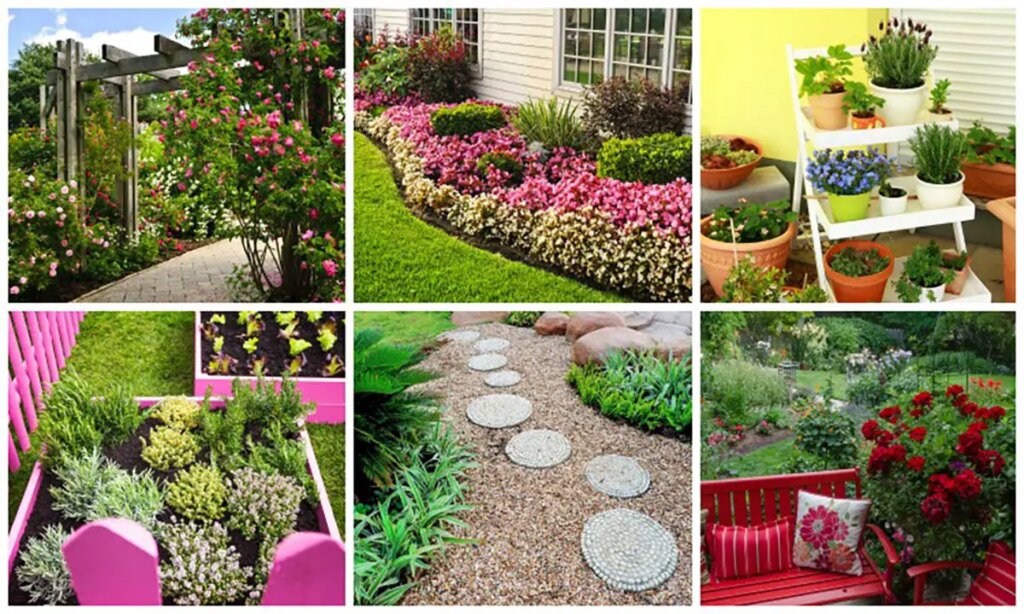
There are many great reasons to consider a raised garden bed in your yard or even on your patio. The raised design lowers rates of compaction and increases drainage. This means that root vegetables have plenty of room to grow downward and your plants are not at as much risk of being flooded during heavy rain events. Raised beds can provide a space-saving design if you have a small yard, porch, rooftop or patio. They offer the chance to put a select amount of nice soil in a part of the yard where the ground is not great for growing food or flowers, without worrying that it will be blended into the poor soil or washed away in a large rain. If you have very weedy soil, then a raised bed with water-permeable weed cloth at the bottom can also let you start fresh with weed-free soil.
Raised beds are a great way to keep critters big and small from digging in your garden beds. It’s an easy way to keep your dog and toddlers out of the garden if you don’t want them to be there. Snails and slugs, which can decimate crops like strawberries and vegetable sprouts, have a rough time making it into garden beds. On the opposite side, raised bed designs keep dirt off of your sidewalk, making your yard easier to clean.
One of the best things about raised garden beds is that they can be designed in a number of ways to fit any aesthetic. They can grow vegetables, flowers, or both. They can be created from recycled materials, wood, stone, or plastic. Here is a look at some design ideas to try, and some tips on making the best garden bed possible.
1. Vary Plant Heights for Landscape Appeal

If you want fresh corn on the cob without the look of a typical cornfield, try bunching it near lower plants, like cabbage. Even all-green vegetable gardens become works of art when you think about varying height, leaf shape and growing season in each bed. Place low-growing plants with leaves that spread toward the outside, and let them spill over the side of the beds, while tall plants are best along the back side and toward the center, in a direction that won’t let them block the sun for other plants.
2.Create Moveable Beds with Handles

Test beds are a great way to figure out whether container gardening is for you, and also to see if you have chosen an optimal location for your garden. Shade, traffic flow in your yard and moisture can all be factors that might make some places better than others. These handled bed shapes allow you to grow plants for a season and then pull them up for the winter or to try a different location next year.
3. Use Recycled Pallets as Containers

Pallets can be found in a number of places for free. Any big box store or warehouse will load their items onto pallets and change them out frequently when they show wear. In many cases, you can purchase them for minimal cost, or even get them for free. One caveat with pallets is that they are not designed to resist rot when touching moist soil. Elevating your bed on rocks can help extend the life of your container.
4. Vary Container Heights

There are several reasons to vary height on containers. One main reason is due to sun access. If you make each bed subsequently higher as they move away from the sun, then it keeps plants from shading the ones behind them. Also, root depth can determine how deep to make each bed. Berry bushes and root vegetables need deeper soil, while plants like tomatoes and peppers have shallow roots and don’t need a lot of soil depth.
5. Include Irrigation

Drip irrigation is a great way to supply your raised beds with water. Container gardens dry out more quickly than in-ground gardens, so a regular watering schedule is important. Taking the time to put in a home irrigation system will be labor intensive at first, but if you hook it to a timer, it will be labor-free for the rest of your growing season, saving you hours of watering.
6. Think Big

There is no reason that container gardens need to be limited to one or two boxes. Instead, consider doing an entire yard area in small raised areas. This is a modern (and highly simplified) take on classic garden designs from places like the Palace of Versailles. The beds can be squared off, like in this example, or they can create a fun or meaningful pattern, like a Medicine Wheel.
7. Keep Surrounding Areas Weed-Free with Mulch
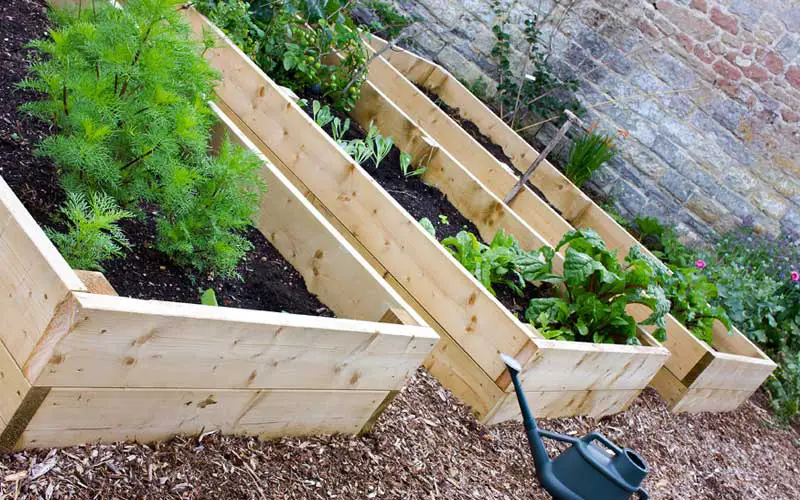
If you have a designated garden area, you want to keep it as weed-fee as possible so that your time is spent in the gardens, and not around them. A weed barrier cloth and a thick layer of mulch is one great way to keep your paths clear.
8. Mix Flowers and Vegetables

Cherry tomatoes are delicious, but their colors can be quite pretty when contrasted with vibrant blue, yellow or purple flowers. Trellised tomatoes, colorful chards, kale and cabbages and feisty peppers can all double as delicious and beautiful in a flower and vegetable combo garden.
9. Design from Above and Below

Using multiple heights in a container is a common starting point in garden design. However, by adding hanging plants at points between the tallest plantings, it can create an even more interesting design scheme. This can be done along the side of a home or deck, or along the edge of a yard.
10. Use Marigolds and other Deer Resistant Plants as Borders

In India, marigolds are considered a flower of celebration. Using them on the outside of beds that your deer love to browse will give you a reason to celebrate as well. Other deer repellent plants include alliums, onion, garlic and chives.
11. Increase Water Retention with Mulchy Soil

The best container garden soil has two components: the right mineral and pH balance for your plants and enough organic matter to hold water. The mulch in the soil also serves as a breeding ground for the right kinds of fungi and bacteria to make your plants healthy, and can keep your soil from becoming compacted.
12. Plant Your Curb

Unless you live in a neighborhood with strict HOA rules, there is no set rule that says that your front lawn must be grass. In many parts of the country, grass is a much less eco-friendly plant than vegetables or native vegetation. Switching to a garden bed system can make your front yard beautiful, practical and more environmentally friendly.
13. Mix Container Materials

Mixed-material gardens can be a beautiful and interesting addition to your garden design. A mix of stone, wood, ceramic, metal and other materials will not only look beautiful during growing season, they will look beautiful during the off season as well.
14. Plant Around Trees

Urban landscaped trees can be planted inside containers, with planting schemes to surround them. In some cases, the plants will go away as the tree trunk widens. In other cases where the tree is slow growing or small, they can be more permanent designs with the tree as an accent.
15. Mix Backyard Uses
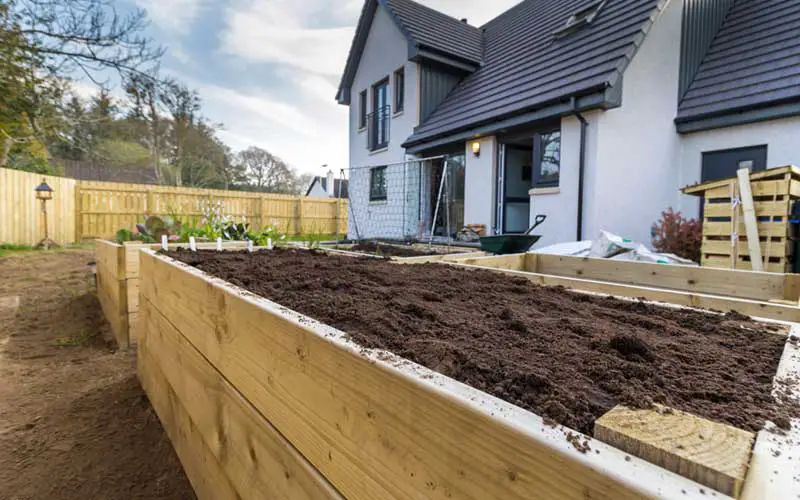
One of the biggest benefits of a container garden is that it is, well, contained. This means that you can have a play area for your kids right next to your garden without worrying about it being trampled. Big or small, vegetable or flower, the only limit to your planting is your imagination.





